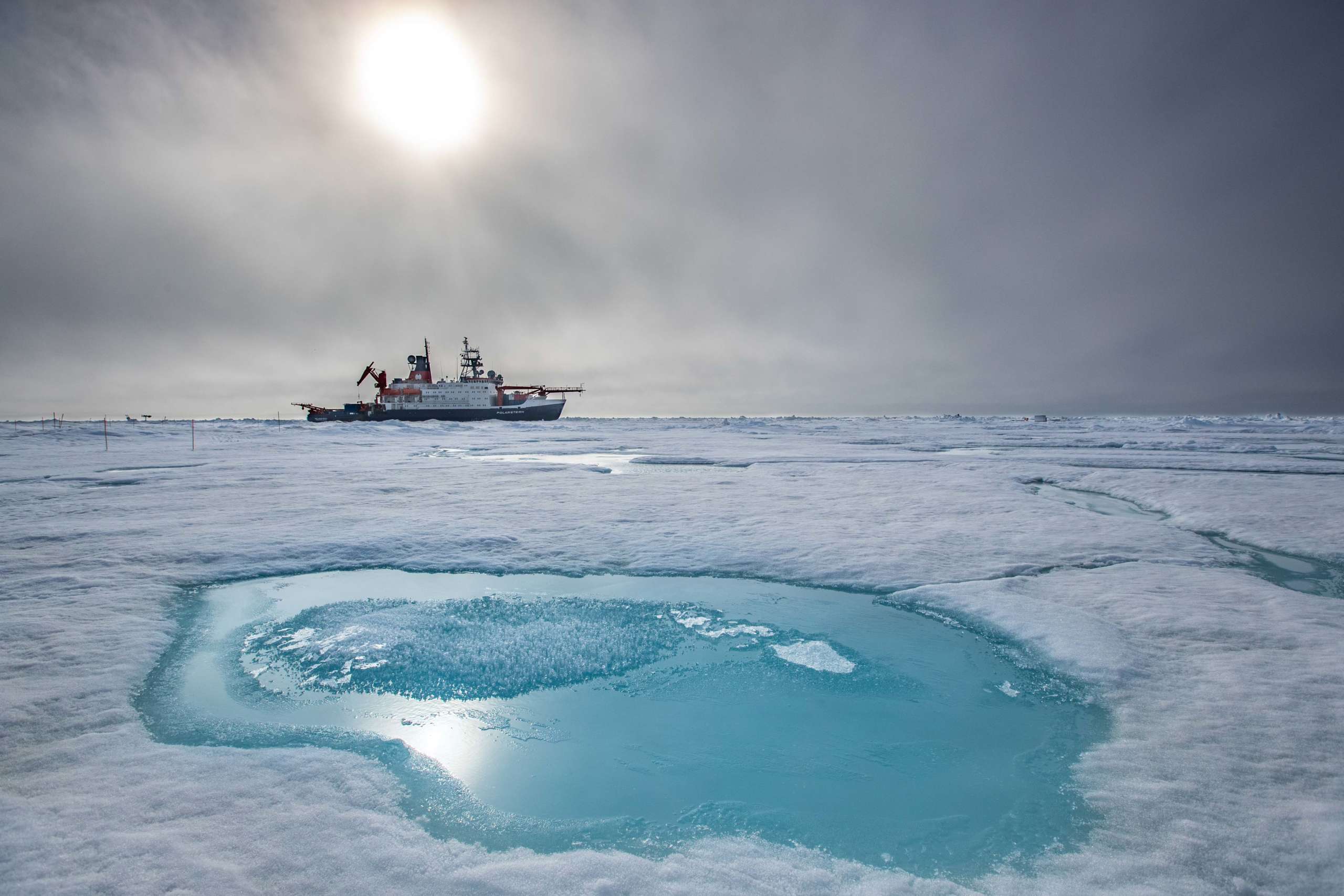As the Arctic sea-ice melt season nears its peak, one community of scientists is poring over satellite images, running experimental forecast models, and asking the perennial question: How low will it go?
For five months this spring and summer, Arctic sea ice melt appeared on track to eclipse the minimum extent of 3.41 million square kilometers (1.32 million square miles) observed in September 2012 – the lowest during the satellite era. As recently as July 31, sea ice was tracking 396,000 square kilometers (153,000 square miles) below the 2012 trajectory.
An abrupt change in the weather at the end of July slowed the melt dramatically. So the consensus of the Sea Ice Prediction Network was that this year would likely fall short of the record.
“We saw a shift of 1.25 million square kilometers in ice extent compared to 2012 in a span of less than three weeks,” said Mitchell Bushuk, a research scientist and modeler with NOAA’s Geophysical Fluid Dynamics Laboratory in Princeton, New Jersey. “This really illustrates some of the challenges we face in predicting sea ice.”
In a region that is rapidly transforming from a reliably frozen ice cap to an open-water ocean, accurate sea ice predictions are increasingly important for indigenous communities, fisheries, ecotourism, oil and gas industries, shipping concerns, wildlife managers and scientists. The longer the lead time, the more valuable they are. While the past few decades have seen improvements in the accuracy of long-term climate outlooks, advances in sea ice forecasts – short-term, sub-seasonal or seasonal sea ice – remain one of meteorology’s grand challenges.
“We’re entering a new regime in the Arctic, one we don’t have as much experience with,” Bushuk said. “It’s characterized by younger, thinner ice, ice that’s more mobile and more vulnerable to breakup during storms. Modeling systems based on past data may not be properly optimized based on what we’re about to see.”
As a member of the Sea Ice Prediction Network, Bushuk participates in a collaborative effort to improve lead time for sea ice forecasts. Each year, the network of scientists analyzes and compares numerous experimental models, producing monthly Sea Ice Outlooks synthesized from a broad range of perspectives ranging from advanced numerical models to observations from citizen scientists.
“It’s a friendly competition,” said Mark Serezze, director of the National Snow and Ice Data Center, whose scientists contribute several of the experimental models in the cohort. “Whose model is doing well? “Whose is not so good? And then we start to explore the question of why.”
Ultimately, the goal is to develop accurate sea ice predictions up to six months in advance.
While Bushuk’s GFDL model has been one of the most aggressive in forecasting melting conditions for 2020, the consensus of the researchers is that the sea ice minimum this year will be about 4.36 million square kilometers(1.68 million square miles), or close to what was observed in 2019, the second-lowest year on record. Other NOAA models, including those from the National Weather Service’s Climate Prediction Center and Environmental Modeling Centerare predicting dramatic, but not record sea ice loss between now and September.
“It’s extraordinarily difficult to make seasonal predictions about sea ice,” Serrezze said. “A big part of the problem is that it’s not a stable system – the rules keep changing.”
Summer ice extent is strongly influenced by summer weather patterns, he said, adding that even the best weather models can’t predict Arctic weather beyond seven to 10 days. “The weather is always throwing us curve balls.”
But as the Arctic changes, so do the needs of those that live and work there. While scientists are still challenged to accurately predict big-picture events like overall sea ice extent, people in the Arctic are asking for much more localized forecasts.
“Right now the focus is on sea ice extent,” Serreze said. “But stakeholders want to know when the Chukchi Sea will open, when the Northern Sea Route will be available, when the ice will form over crabbing grounds in the Bering Sea?”
Meanwhile, in the Arctic, the melt has sped up again, with sea ice loss tracking 2012 once more.
“I will say, we’re often humbled,” Serezze observed.

